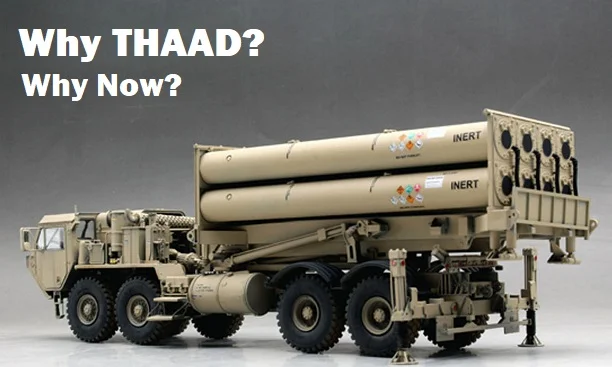The decision to deploy an expensive system such as THAAD may indicate the need for more robust controls on the front-line. While THAAD adds a crucial layer of defense against short- to intermediate-range missiles, will its deployment really reduce the risk of missile penetration? We examine the pros, cons and effectiveness of THAAD as a key control for this key risk.
The Terminal High Altitude Area Defense (THAAD) system is highly effective as an advanced missile defense system. It is a US-developed technology designed to intercept and destroy short, medium, and intermediate-range ballistic missiles during their terminal phase of flight, i.e., the final stage as the missile re-enters the atmosphere. THAAD uses a kinetic kill vehicle, meaning it destroys incoming missiles by colliding with them at high speeds, relying on force rather than explosives.
THAAD is considered one of the most advanced and reliable missile defense systems available, especially for high-altitude interceptions, and has been deployed in various regions around the world, including South Korea.
PROS of THAAD:
- High Accuracy: THAAD employs hit-to-kill technology, which is extremely precise. Its radar system, the AN/TPY-2, is highly capable, allowing THAAD to detect, track, and intercept missiles from long ranges.
- Altitude of Interception: THAAD can intercept missiles at very high altitudes (up to 150 kilometers), providing a wider coverage and ensuring the destruction of incoming threats before they reach lower altitudes, where damage to civilians or infrastructure could be greater.
- Mobility: THAAD is transportable, making it flexible to be deployed in different regions as needed. This mobility enhances its utility in various strategic contexts.
- Layered Defense: THAAD is often deployed in conjunction with other missile defense systems, such as the Patriot missile system and Aegis, forming a layered defense network. This synergy increases overall effectiveness by providing multiple lines of defense.
CONS of THAAD:
- Cost: Each THAAD battery is approximately $12 million. This figure includes the advanced technology required for its hit-to-kill capability, radar, and overall operational efficiency, which makes it a significant investment for the countries deploying it.
- Vulnerability to Saturation: Like most missile defense systems, THAAD can be overwhelmed by a large number of incoming missiles launched simultaneously (a saturation attack).
- Limited Coverage Area: THAAD covers only a specific area where it is deployed, which means multiple units are required for broader regional or national defense.
THAAD vs PATRIOT vs IRON DOME vs S400
THAAD is designed to intercept short, medium, and intermediate-range ballistic missiles during their terminal phase, at high altitudes (up to 150 km). It uses hit-to-kill technology, meaning it destroys targets by direct impact rather than using explosives. THAAD’s primary advantage is its ability to intercept missiles at a much higher altitude, providing an extra layer of defense and reducing the risk of collateral damage on the ground.
Patriot, is a more versatile system that can target a broader range of threats, including aircraft, cruise missiles, and lower-altitude ballistic missiles. The Patriot is best suited for short- and medium-range ballistic missile defense and operates at lower altitudes than THAAD, providing a closer-in defense.
Iron Dome is highly effective for defending localized areas, such as cities or military bases, from frequent, lower-altitude threats like rockets and artillery shells, as demonstrated in its deployment in Israel. Specifically tailored to intercept and neutralize short-range rockets, artillery, and mortars (up to 70 km), as well as some aircraft and UAVs, its primary goal is to protect against low-altitude, short-distance projectiles often aimed at civilian areas. Iron Dome uses small, guided interceptor missiles to detonate incoming projectiles in mid-air before they reach their target, relying on advanced radar systems to calculate the trajectory and impact zone of the threat.
S-400, on the other hand, is a Russian multi-layered air defense system with broader capabilities. It can engage not only ballistic missiles but also aircraft, cruise missiles, and drones at various altitudes (up to 400 km in range). It can launch different types of missiles tailored for specific threats, offering a versatile defense against both aerial and missile attacks.
Can THAAD stop Nukes?
While THAAD can intercept certain types of ballistic missiles, its ability to stop an Intercontinental Ballistic Missile (ICBM) carrying a nuclear warhead is limited, as ICBMs typically travel at much higher speeds and altitudes. THAAD is more effective against short, medium, and intermediate-range ballistic missiles, providing defense in a regional context but not designed to stop long-range nuclear missiles.

